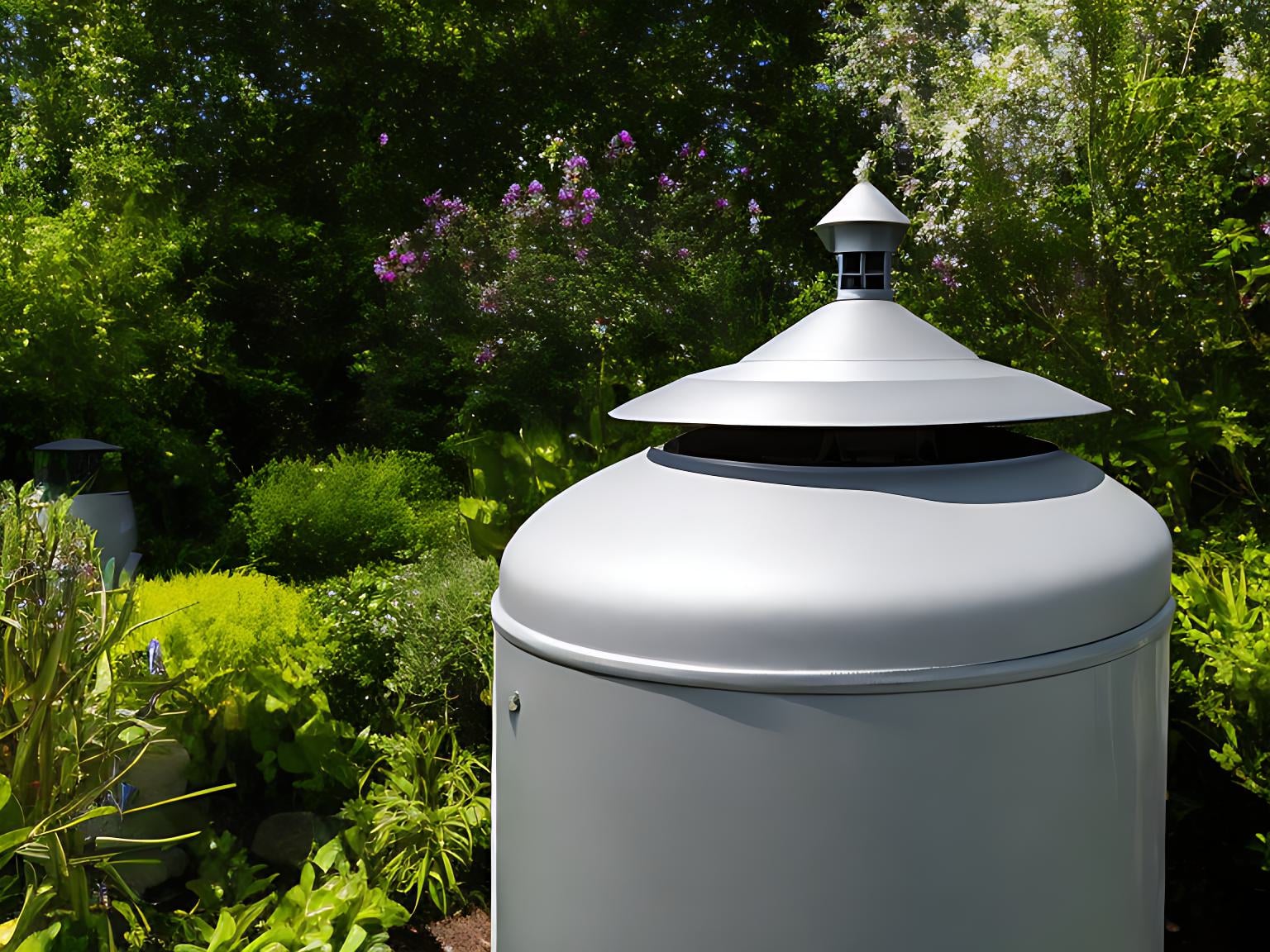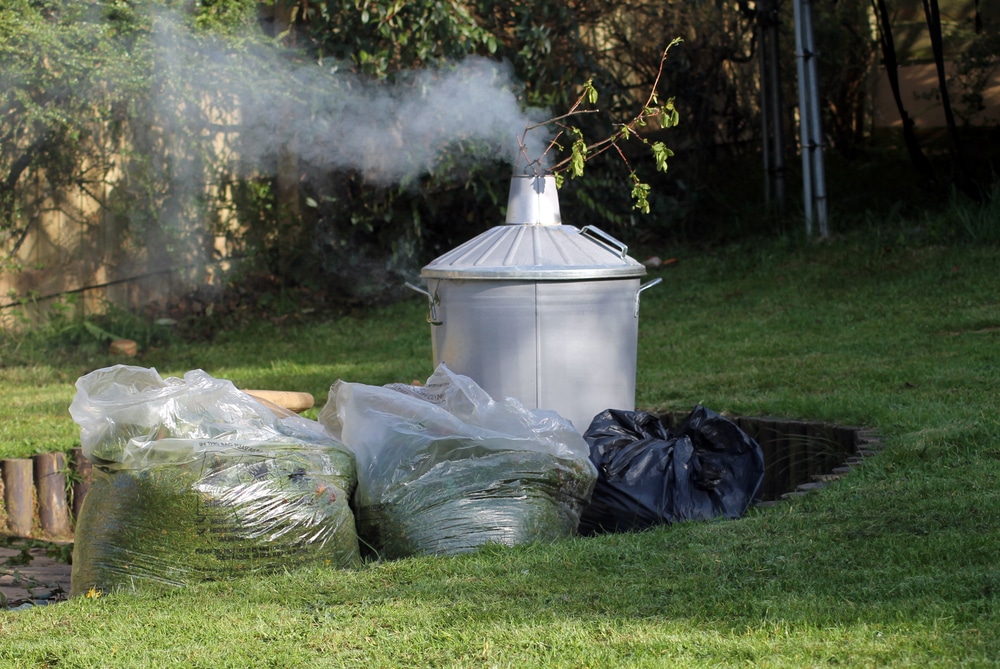Last Updated on
If you have a garden incinerator, chances are you’ve seen smoke billowing out of it. Although they can be great for getting rid of waste in an eco-friendly way, the amount of smoke produced is not ideal. But don’t worry. We’ve got some tips to help reduce garden incinerator smoke so that your neighbours won’t complain about their lungs burning every time you use it. With our advice and a few small changes, you’ll learn how to keep those fumes under control without sacrificing the convenience or effectiveness of your outdoor furnace. So get ready – we’re here to show you how to reduce garden incinerator smoke once and for all.
Table of Contents:
Keep it Clean
When it comes to keeping your garden incinerator clean and running efficiently, regular maintenance is key. Start by emptying the ashtray after each use. This will help prevent the build-up of combustible materials which can cause smoke or even fire if left unchecked. Make sure you also regularly clean out the burn chamber, removing any debris that has accumulated in there. Doing this will ensure a more efficient burning process and reduce the risk of fires caused by clogged chambers.
Next, check for signs of wear and tear on your incinerator’s components, such as seals or gaskets that may need replacing due to age or damage from heat exposure over time. If these parts are not replaced when needed they can lead to dangerous levels of smoke being released into the environment – something we all want to avoid.
Finally, make sure you always have enough fuel available for your incinerator so that it runs smoothly without interruption. It’s best practice to keep an extra supply handy just in case you run out unexpectedly during a session – no one wants their bonfire night ruined because they ran out of wood chips.
By following these simple steps you can rest assured knowing that your garden incinerator is running safely and efficiently at all times. Happy burning.
Keeping your garden incinerator clean and well-maintained is essential to reduce smoke emissions. Now let’s look at how to choose the right fuel for your incinerator in order to maximise its efficiency and minimise smoke.
Fuel Wisely

When it comes to burning in a garden incinerator, the type of fuel you use is important. Dry wood and charcoal briquettes are both great options for burning safely and cleanly. They burn slowly, producing minimal smoke and ash. On the other hand, wet or green wood can create a lot of smoke when burned due to its high moisture content. This can be hazardous to your health as well as your neighbours’ if not managed properly. Additionally, certain types of paper, such as newspaper should never be used in an incinerator because they produce toxic fumes that could be harmful if inhaled over long periods of time.
The key to getting the most out of your garden incinerator is using dry fuels like hardwood logs or charcoal briquettes that have been stored away from moisture for at least six months prior to use. Hardwoods such as oak, hickory, maple, birch and cherry all make excellent fuel sources since they burn slowly with minimal smoke production while providing plenty of heat output for cooking or warming up outdoor spaces during cooler months. Charcoal briquettes also work well but may require more frequent refuelling than hardwood logs depending on how much heat you need from them at any given time.
Finally, avoid using softwoods like pine or cedar in an incinerator since these woods tend to burn quickly with lots of sparks which can be a fire hazard if not monitored closely enough while burning outdoors.
It’s important to fuel your garden incinerator wisely and use the right type of fuel in order to reduce smoke. Ventilation is also key, as proper air flow can help prevent smoke from building up and becoming a nuisance.
Ventilation is Key

Proper ventilation is essential for reducing smoke from a garden incinerator. Without it, you risk not only irritating your neighbours but also damaging the environment. To ensure good airflow around the unit, place vents in strategic locations such as near windows and doors to allow air to flow freely. Make sure that these vents are large enough to provide adequate circulation without compromising the integrity of the structure. Additionally, avoid blocking any existing openings with furniture or other items that could impede air movement.
When positioning your incinerator, consider how much wind will be blowing through it at different times of day and seasonally so that smoke won’t blow back into your home or yard when there’s no breeze outside. You should also keep combustible materials away from the unit; this includes wood piles, mulch beds, and shrubs which can catch fire if too close to an open flame source like an incinerator. Finally, make sure you’re using dry fuel like paper or cardboard instead of wet material such as grass clippings or leaves which can produce more smoke than necessary due to incomplete combustion.
By following these tips on proper ventilation for a garden incinerator, you’ll reduce both indoor and outdoor pollution while keeping your neighbours content. Additionally, you will have the satisfaction of knowing that you are doing something positive for the environment by avoiding unnecessary emissions from burning waste improperly.
Conclusion
In conclusion, learning how to reduce garden incinerator smoke is possible with a few simple steps. Keeping your incinerator clean and fueled wisely will go a long way in ensuring the smoke produced is minimal. Additionally, making sure there is proper ventilation when burning materials can help reduce the amount of smoke created by an incinerator. With these tips in mind, you should be able to enjoy using your garden incinerator without worrying about too much smoke.
Paul is the type of person who never met a problem he couldn’t fix. He can always be found tinkering with something in his house, even if it isn’t broken! His tips and tricks are often shared on our site. He’s the one you call when something breaks because he has been known to improvise fixes for everything from leaky faucets to malfunctioning dryers.



